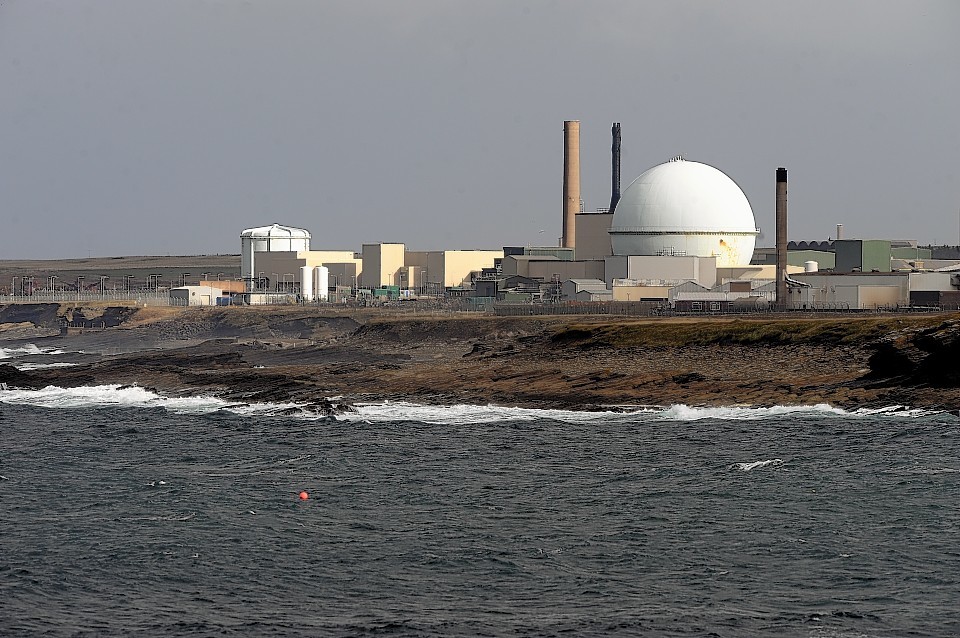Cargoes of radioactive nuclear waste will be shipped around the north coastline from Caithness to Cumbria under new plans from bosses at the Dounreay plant.
The move is part of efforts to find an alternative to the controversial practice of sending spent fuels by rail for reprocessing at Sellafield – but critics are warning against the risks of navigating rough seas around Cape Wrath and the Minch.
One prominent Highland campaigner said public concerns were not being taken seriously.
Environmental group Friends of the Earth said sticking with rail was a better option than navigating the stormy waters off the north and west coast of Scotland.
Highland MSP John Finnie said he had particular concerns, given the loss of the Coastguard’s Storonway-based emergency tug, which went to the aid of the nuclear-powered submarine HMS Astute after she grounded off Skye during sea trials four years ago.
The Nuclear Decommissioning Authority (NDA) is refusing to give details of how and when the fuels will be moved by either rail or sea on grounds of “national security”.
But Dounreay chiefs defended the plan, insisting a successful trial could give them two potential routes for disposing of waste which cannot be dealt with at the site near Thurso.
A spokeswoman for the base said members of the Dounreay Stakeholder Group had been informed about the trials.
However, John Boocock, co-chair of Highlands Against Nuclear Transport, said the wider public should also have been given a say.
“We are concerned that the possibility of shipping nuclear waste by sea has not been discussed with our communities in the Highlands and Islands,” he said.
“We believe that any proposals to avoid processing nuclear waste at the point of use by transporting waste elsewhere should be open to public scrutiny at all stages. We also believe that public fears should be taken seriously by the nuclear authorities.”
Independent Highland MSP John Finnie said: “It is entirely understandable that communities are concerned about this, regardless of how low the risk of accidents.
“There are a lot of factors need to be considered here, such as the weather on the west coast – which can be very challenging in the Minch – the ongoing situation about the lack of tugs and so on.”
Campaigners have been fighting for the reinstatement of the Coastguard tug which used to go to the aid of stricken vessels in the strait separating the mainland and the inner Hebrides with Lewis and Harris in the outer Hebrides.
Cover has been reduced to a single vessel based in Shetland to work “around Scotland’s coast as required”.
A spokeswoman for Dounreay said: “The Dounreay Stakeholder Group was informed in March that trials of a sea route would be carried out.
“If successful, this will give the option of two routes for the delivery of Dounreay’s ‘exotic’ fuel to Sellafield.
“The trial will allow implementation of the NDA’s preferred options paper.”
David Flear, chairman of the Dounreay Stakeholders Group said: “When you think about there’s only three ways of getting the fuel out – by land, sea or air and flying is out of the question.
“They came to the group with options and gave us the chance to discuss them properly.
“Some people think that the sea option is the best and others things that by land is the best. My view is that the fuels need to be moved because there is no facility to reprocess them at Dounreay and they need to fully look at all the options for the transport.”
Dr Richard Dixon, director of Friends of the Earth Scotland said: “The first priority should always to be to deal with as much waste as possible on site, but there will still be a need to transport some of the mountain of nuclear waste we have created.
“There are no perfect answers but on balance sticking with rail seems the better option, especially with climate change making the waters around the UK more stormy.
“People have been surprised to find radioactive waste rail wagons passing near their homes but carefully routes rail transport allows for easier access if anything starts to go wrong.
“The proposal to use ships sounds like a ploy to get this problem out of people’s minds rather than the safest option.”
The NDA could not be reached for comment.
The exotic fuels are a sub-set of the site’s nuclear materials and comprise a total of about 26 tonnes of unirradiated plutonium bearing fuels, unirradiated high enriched uranium (HEU) and irradiated fuels (oxide and carbide).
